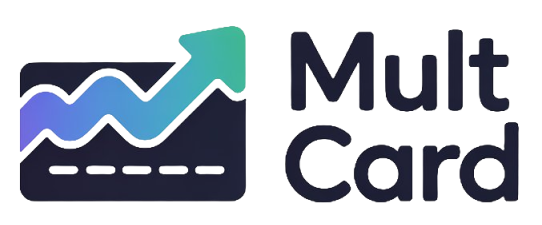Navigating the world of business finance can feel like a complex puzzle, especially when it comes to managing day-to-day expenses, tracking cash flow, and planning for future growth. For entrepreneurs, freelancers, and seasoned business owners alike, finding tools that simplify these tasks is not just a convenience—it’s a strategic necessity.
This is where a dedicated business credit card steps in. More than just a piece of plastic, it’s a powerful financial instrument designed to separate personal and professional finances, unlock valuable rewards, and build a credit history for your company. This guide will walk you through everything you need to know, from the fundamental differences between card types to the best practices for maximizing their value.
What Exactly is a Business Credit Card?
At its core, a business credit card is a line of credit issued to a company rather than an individual. Its primary function is to pay for business-related expenses, such as inventory, office supplies, marketing campaigns, travel, and software subscriptions. While it functions similarly to a personal credit card at the point of sale, its underlying structure, benefits, and reporting mechanisms are tailored specifically for commercial use.
Understanding the distinction is crucial because it affects everything from your legal protections to your ability to secure future funding. Using a personal card for business might seem easier at first, but it can lead to significant accounting headaches and potential legal liabilities down the road.
Business vs. Personal Credit Cards: Key Differences
To truly grasp the value of a dedicated business card, it’s helpful to see a direct comparison. While they may look the same, their impact on your finances is vastly different.
| Feature | Business Credit Card | Personal Credit Card |
|---|---|---|
| Primary Purpose | For professional and commercial expenses only. | For individual and household expenses. |
| Credit Reporting | Reports to business credit bureaus (e.g., Dun & Bradstreet, Experian Business). May or may not report to personal bureaus. | Reports to personal credit bureaus (e.g., Experian, Equifax, TransUnion). |
| Liability | Typically requires a personal guarantee, making the owner personally liable for the debt. | The individual cardholder is solely liable for the debt. |
| Rewards & Perks | Tailored to business spending categories like shipping, advertising, office supplies, and business travel. | Focused on consumer spending categories like groceries, dining, and entertainment. |
| Credit Limits | Often significantly higher to accommodate larger business purchases and operational costs. | Based on personal income and credit history; generally lower than business limits. |
| Legal Protections | Not fully covered by the Credit CARD Act of 2009, meaning issuers can change interest rates with less notice. | Protected by the CARD Act, which provides consumer safeguards against sudden rate hikes and unfair fees. |
The Tangible Benefits of Using a Business Credit Card
Adopting a business credit card is more than just good practice; it unlocks a suite of benefits that can directly contribute to your company’s financial health and operational efficiency.
Streamlined Expense Management
This is perhaps the most immediate advantage. By funneling all business-related purchases through one card, you create a clean, itemized record of your spending. This drastically simplifies bookkeeping, expense tracking, and tax preparation. Instead of sifting through mixed personal and business statements, you have a single, consolidated report, making it easier to identify spending patterns and create accurate budgets.
Building Business Credit
Just as you have a personal credit score, your business has its own credit profile. A strong business credit score is vital for securing loans, getting favorable terms from suppliers, and lowering insurance premiums. Using a business credit card responsibly is one of the most effective ways to build this credit history. Timely payments are reported to business credit bureaus, establishing a track record of financial reliability for your company.
Access to Higher Credit Limits
Businesses often have larger and more frequent expenses than individuals. Business credit cards are designed with this in mind, typically offering higher credit limits than their personal counterparts. This increased purchasing power provides the flexibility to invest in new equipment, launch a large marketing campaign, or manage significant inventory orders without tying up your liquid cash.
Lucrative Rewards and Perks
The rewards programs on business cards are strategically designed to benefit companies. You can earn significant cash back, travel miles, or points on categories where your business spends the most. Common high-yield categories include:
- Digital advertising (e.g., Google Ads, Facebook Ads)
- Shipping and postage
- Office supply stores
- Telecommunications (internet and phone bills)
- Travel and dining for business trips
These rewards can be reinvested into the business, used to offset travel costs, or even serve as employee incentives.
Improved Cash Flow Management
A credit card’s grace period—the time between a purchase and when payment is due—is a powerful cash flow management tool. It allows you to make necessary purchases immediately while keeping cash in your account for a longer period. This float can be critical for managing payroll, covering unexpected costs, and aligning your expenses with your revenue cycle.
How to Choose the Right Business Credit Card for You
With a vast array of options available, selecting the perfect card requires a careful assessment of your company’s unique needs. Follow these steps to make an informed decision.
1. Analyze Your Business Spending Habits
Start by looking at your books. Where does most of your money go? Are you constantly shipping products? Do you spend a significant amount on online advertising? Or is your biggest expense category travel and client dinners? Identifying your top 2-3 spending categories will help you pinpoint which type of rewards card will offer the most value.
2. Compare Reward Structures
Business cards generally fall into a few reward categories. Understanding them is key to maximizing your return.
- Tiered Rewards: These cards offer high rates of return (e.g., 3-5%) on specific business categories and a lower flat rate (e.g., 1%) on everything else. Best for businesses with concentrated spending.
- Flat-Rate Rewards: These cards provide a simple, consistent return (e.g., 1.5-2%) on every single purchase, regardless of the category. Ideal for businesses with diverse, unpredictable spending.
- Travel Rewards: These cards earn points or miles that can be redeemed for flights, hotels, and other travel-related expenses. They often come with premium perks like airport lounge access and travel insurance.
3. Evaluate Fees and Interest Rates
Rewards are only one part of the equation. Pay close attention to the fee structure:
- Annual Fee: Some premium cards charge an annual fee in exchange for superior rewards and perks. Do a cost-benefit analysis: will the value of the rewards you earn outweigh the fee?
- APR (Annual Percentage Rate): If you anticipate carrying a balance from month to month, the APR is a critical factor. Look for cards with a low introductory APR or a competitive ongoing rate.
- Other Fees: Check for foreign transaction fees (if you do business internationally), late payment fees, and fees for additional employee cards.
4. Consider Additional Perks and Protections
Beyond standard rewards, many business cards offer valuable built-in benefits. These can include purchase protection against damage or theft, extended warranties on items you buy, car rental insurance, and comprehensive travel insurance. For businesses with a team, look for features like free employee cards with individual spending limits and detailed expense-tracking tools.
Navigating the Application Process: A Step-by-Step Guide
Applying for a business credit card is a straightforward process, but it helps to be prepared. Unlike personal cards, the application will ask for details about both you and your business.
What You’ll Need to Apply
Even if you’re a freelancer or just starting out, you can qualify. Gather the following information before you begin:
- Business Legal Name and DBA (“Doing Business As”) Name: The official name of your company.
- Business Address and Phone Number: Your official place of business.
- Business Structure: Sole proprietorship, partnership, LLC, S-Corp, etc.
- Employer Identification Number (EIN): Your company’s tax ID number. If you’re a sole proprietor without one, you can typically use your Social Security Number (SSN).
- Industry Type: The category your business operates in.
- Annual Business Revenue: Your company’s yearly income. Be honest and accurate.
- Years in Business: How long the company has been operating.
- Personal Information: Your name, address, SSN, and total annual income (which can include income from other sources).
Understanding the Personal Guarantee
Nearly all small business credit cards require a personal guarantee. This is a legally binding agreement that makes you, the business owner, personally responsible for the debt if the business is unable to pay it back. This is how card issuers mitigate their risk, especially for new or small businesses. Because of this, the issuer will almost always check your personal credit score as a key part of the approval decision.
Best Practices for Managing Your Business Credit Card
Getting the card is just the first step. Using it wisely is what truly unlocks its potential and protects your financial health.
Set Clear Policies for Employee Cards
If you issue cards to employees, establish a clear written policy. This should outline what constitutes an authorized business expense, define individual spending limits, and explain the process for submitting receipts. This prevents misuse and simplifies expense reconciliation.
Pay Your Balance in Full
The best way to use any credit card is to pay the statement balance in full each month. This allows you to reap all the rewards and benefits without ever paying a cent in interest. High-interest credit card debt can quickly negate the value of any rewards earned.
Regularly Review Statements
Make a habit of reviewing your monthly statements carefully. This helps you monitor your company’s spending, ensure all charges are legitimate, and catch any potential fraudulent activity early. It’s also a great way to track your progress toward reward goals.
Integrate with Accounting Software
Most business credit cards offer integrations with popular accounting software like QuickBooks, Xero, or FreshBooks. Linking your accounts automates transaction categorization, saving you countless hours on manual data entry and making your financial records more accurate.
Conclusion
A business credit card is a foundational tool for modern financial management. It provides a clear line between your personal and professional lives, simplifies your accounting, strengthens your company’s credit profile, and rewards you for the spending you’re already doing. By carefully assessing your needs, choosing the right card, and managing it responsibly, you can transform a simple payment method into a strategic asset that fuels your business’s growth and stability.
For more in-depth information and resources, the U.S. Small Business Administration provides a comprehensive guide to business credit cards and other financing options to help you make the best decisions for your company’s future.




